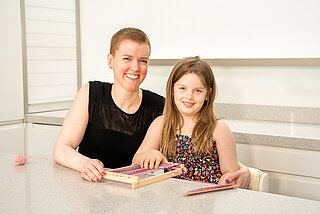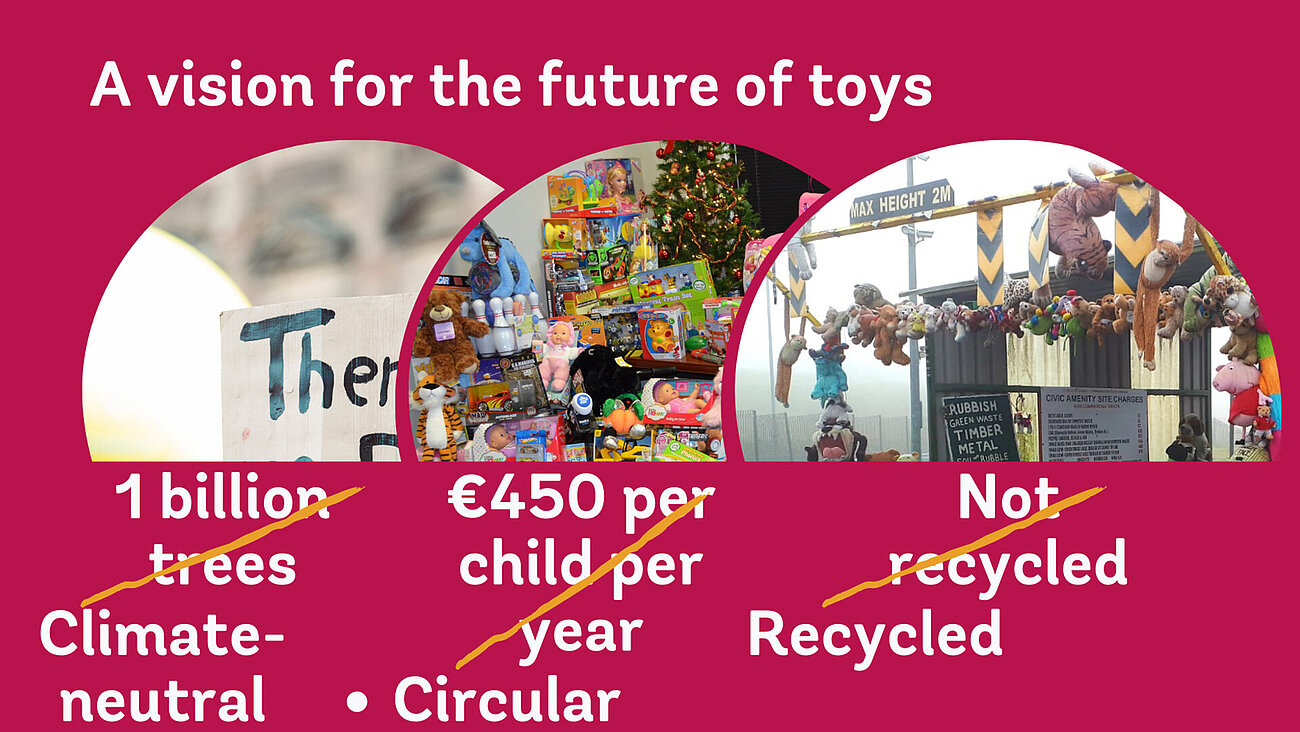
Why toys need to change – a vision for the future
Let’s take toys from linear to circular, for our children
Commentary by Sharon Keilthy
Jiminy Eco Toys is the world’s first eco toy store. Since starting it in 2018, as my eco-activism, I’ve learned a lot about what ‘sustainable’ means for toys. I’m using this Sustainable Toys column here at Spirit of Play to share that with you. I want to inspire you to help the toy industry protect our children’s planet and future as well as making them happy!
The case for change in toys: from linear to circular

Many leading toy makers are already experimenting with very exciting improvements like recycled plastic and bioplastic, our industry is just at the start of becoming sustainable, and most toys are still linear and intensely polluting and wasteful at start, middle, and end of their life cycle.
Important note: I’m not writing this to make you feel guilty. Rather, so that we can all act together to solve it, we first need to be clear on the problem.
- A toy’s start-of-life is highly polluting. We are in a climate crisis and Ellen MacArthur estimates humanity’s use of plastic contributes 6% of global carbon emissions. Toys is the world’s most plastic-intensive industry, with 90% made from virgin petro-plastic1. Most then travel 22,000 km to us from China2. All emitting so much CO2 we'd have to plant 1 billion trees to absorb it3!
- A toy’s mid-life is hit-and-miss. The average child under 12 in the developed world receives about €450 per year of new toys4. How many hours does each get used? Some studies show toys disused within a month. Broken toys are hard-to-impossible to repair – toy makers don’t yet as standard offer spare parts, repair manuals, or repair services. Toy libraries and toy rental services exist but are usually local, small-scale, community initiatives – not the mainstream at-scale norm.
- A toy’s end-of-life is a waste problem for families, local authorities, and charity shops. It's sadly usually socially-unacceptable to re-gift a used toy. Charity shops often decline soft toy donations (and some decline all toys). Most toys are mixed-material so not recyclable. And if they do get "recycled", most toys actually get downcycled into park benches etc.
That's the environmental case for change in toys - and what about the human case?
Gifts that preserve the future
I asked our then 9-year-old customer Aoife why it’s important to choose eco-friendly toys. She answered, "It's important because plants and animals are dying out. So, it's important to use eco-friendly things so nothing gets hurt."
But if we buy a gift to make Aoife happy, but we choose a virgin petro-plastic toy, the uncomfortable truth is:
- Our gift is making the plants and animals die out;
- Our gift is endangering Aoife's planet and future.
...Aoife doesn't want that. We don't want that. So let’s skip ahead to the feel-good toy buying experience that awaits us, once we’ve done the work to make our industry sustainable!
The year: 2033; location: your local toy store
It's 10 years from now. It's a Saturday and you need a gift for a child in your life. You go to a big mainstream toy store and as you walk through the sliding doors, you see signs for the toy repair service, the spare parts section, and toys for rent. As you stroll through the construction toys aisle and the soft toys aisle, you can't help but notice that every toy on every shelf is made from recycled plastic or bio-plastic or wood or cardboard. There are even refurbished "proudly preloved" toys in a nice giftable box with a guarantee. You relax and choose the toy the child will love the most, knowing that whichever you buy, your gift will be protecting that child's planet and future, not the opposite.
The material a toy is made from has the biggest impact on its carbon footprint
Low-carbon materials include:
- Plants - wood, carbon-sink bio-plastics like bio-PE, cardboard, paper, cork, rubber;
- Already-recycled materials (made from waste) like recycled plastic, recycled wood, recycled cardboard, recycled paper. (Not to be confused with recyclable materials which are new but can in theory be recycled after use.)
See here examples of toys made from low-carbon materials.
Further links:
Video: Best Practice: Eco as the new normal – the sustainable future of toys (sneak preview of the presentation)
Article: Learn more about bio-plastics and toy-safe recycled plastics – including concepts like mass balance – in Sharon’s report for the Spirit of Play online magazine from the bio!TOY Conference 2023.
About the author
Sharon Keilthy from Dublin, Ireland founded the world's first eco-activist toy store Jiminy.ie Community and has sold over €2 million of eco toys to date - all carbon-neutral and minimal-waste. She co-founded the Women in Toys Sustainability Learning Community, sits on the Toy Association Sustainability Committee, and is faculty at the Toy Design Degree Otis College Los Angeles.





